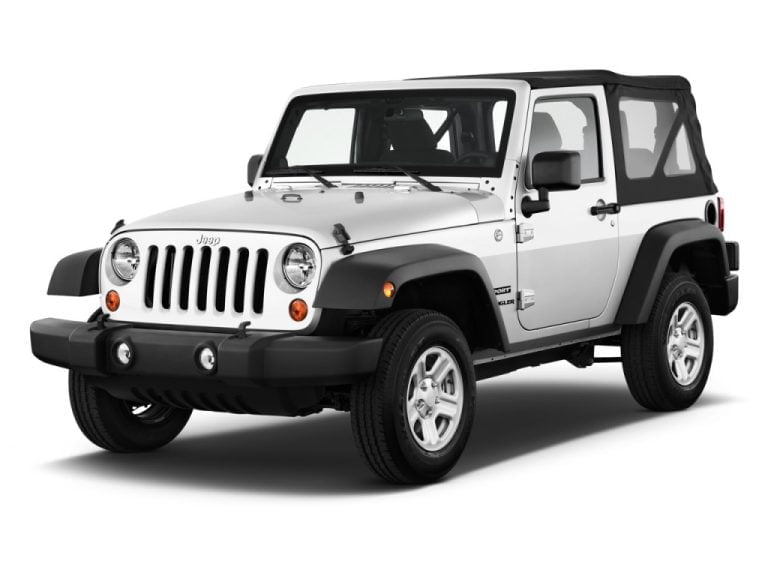How to Drive a Manual Jeep: Mastering Off Road Adventures
In the age of automatic transmissions dominating the roads, the art of driving a manual jeep seems like a forgotten skill.
Yet, hidden beneath the shadows of convenience lies a thrilling and engaging experience waiting to be rediscovered.
Join us as we embark on a journey to unravel the secrets of mastering the manual transmission, unleashing a sense of freedom and control like never before.
Let’s dive into the world of manual jeep driving, where adventure meets skill and the road becomes a canvas to unleash your inner driver.
how to drive a manual jeep
To drive a manual jeep, start by familiarizing yourself with the clutch, shifter, and driving position.
Press both the brake and clutch pedals, then turn the key to start the car.
Make sure the shifter is in neutral and slowly let out the clutch to ensure the engine idle remains steady.
Release the parking brake and start on a flat surface.
Press the clutch to the floor, move the stick into first gear, and slowly release the clutch while adding throttle through the gas pedal.
Practice starting on a driveway or parking lot to perfect the motion.
Pay attention to the tachometer for shifting to the next gear.
To upshift, press the clutch, change gears, and release the clutch.
When slowing down, press the clutch and brake together to avoid stalling the engine.
To park the vehicle, press the clutch and brake, put the car in neutral, set the parking brake, and then release the clutch and brake.
With a manual jeep, you have more control over the vehicle and can maximize fuel efficiency by shifting gears.
Key Points:
- Familiarize yourself with the clutch, shifter, and driving position
- Start the car by pressing both the brake and clutch pedals and turning the key
- Ensure the shifter is in neutral and slowly release the clutch to maintain a steady engine idle
- Release the parking brake and start on a flat surface
- Practice starting on a driveway or parking lot to perfect the motion
- Pay attention to the tachometer for shifting to the next gear
Check this out:
💡 Did You Know?
1. The first Jeep, the Willys MB, was introduced in 1941 for the US military during World War II. It was initially designed as a general-purpose four-wheel-drive vehicle to be used by the soldiers in various terrains.
2. The origins of the “Jeep” name are still debated. One theory suggests that the term “Jeep” comes from the military designation “GP” (for “General Purpose”), as the soldiers phonetically shortened the name to “Jeep.” Another theory claims that the name was inspired by a character named “Eugene the Jeep” in the Popeye comics, known for his ability to traverse in any environment effortlessly.
3. Many overlook this, but driving a manual Jeep provides better control over the vehicle, particularly in off-road situations. The ability to switch gears manually allows the driver to have more control over the engine power delivery and torque to navigate challenging landscapes.
4. The term “Jeep wave” refers to the custom among Jeep owners to wave at each other when passing on the road. It is a unique tradition that symbolizes camaraderie and mutual respect among Jeep enthusiasts, especially when driving a manual Jeep.
5. Jeep played a significant role in the development of four-wheel drive (4WD) systems for cars beyond military use. The knowledge and expertise gained from producing reliable off-road vehicles eventually led to the incorporation of advanced 4WD technology in consumer vehicles, which has greatly influenced the automotive industry as a whole.
The Benefits Of Driving A Manual
Driving a manual transmission vehicle, such as a Jeep, offers numerous benefits that make it a worthwhile endeavor for those seeking a more engaging and fuel-efficient driving experience. While manual transmissions are slowly disappearing from the new car market, they can still be found in used models, including Jeep vehicles.
One of the primary advantages of driving a manual is the level of control it provides. With a manual transmission, the driver has the ability to precisely dictate when to shift gears, allowing for a more connected and immersive driving experience.
In addition to the increased level of control, driving a manual Jeep can also be a fun and exhilarating experience. Shifting gears manually can provide a sense of accomplishment and excitement, especially when navigating off-road adventures. Moreover, manual transmissions are known for their fuel-saving capabilities. By allowing the driver to optimize gear ratios and engine performance, manual transmissions can help maximize fuel efficiency, particularly in rugged terrain where continuous gear shifting is necessary.
Understanding The Manual Transmission Setup
Before driving a manual Jeep, it is important to understand the setup of a manual transmission. Unlike automatic transmissions, which use fluid coupling to shift gears, manual transmissions require the driver to engage the clutch and shift gears manually using a gear lever. The gear lever is typically located on the center console and has numbers arranged in an H-like pattern for different gears.
A key component of the manual transmission setup is the clutch pedal, situated on the left side of the pedal assembly. The clutch pedal disconnects the engine from the transmission, enabling smooth gear shifting. The gas and brake pedals are on the right and in the middle, respectively. It is crucial to familiarize yourself with the pedals’ location and function before starting the car.
- The setup of a manual transmission requires manual gear shifting and clutch engagement.
- The gear lever, usually found on the center console, features an H-like pattern for different gears.
- The leftmost pedal, the clutch pedal, disconnects the engine from the transmission for smooth shifting.
- The gas and brake pedals are in the middle and on the right, respectively – understanding their function is crucial.
“Before embarking on the journey of driving a manual Jeep, understanding the basic setup of a manual transmission is crucial.”
Engaging The Clutch And Starting The Car
Before starting the manual Jeep, it is important to ensure the following:
- Shifter in Neutral: Make sure the shifter is in the neutral position.
- Engaged Brake and Clutch Pedals: Ensure that both the brake and clutch pedals are engaged.
- Starting the Car: Press both pedals simultaneously and turn the key or press the start button to start the car.
- Keep Feet on Pedals: As the engine starts, keep both feet on the brake and clutch pedals.
- Check Shifter: Double-check that the shifter remains in the neutral position to prevent unintended movement.
Once the car is started, follow these steps:
- Slowly Release Clutch: Slowly release the clutch pedal while monitoring the tachometer.
- Monitor Idle: Ensure the engine idle remains steady.
- Gear in Neutral: If the engine idle slows and the car attempts to move forward, shift it back to neutral.
- Release Parking Brake: Before driving, release the parking brake to ensure unrestricted movement of the Jeep.
Remember to always prioritize safety and follow these steps to start and operate your manual Jeep smoothly.
- Additional notes:
- Always ensure the parking brake is released before driving the vehicle.
- Double-check that the shifter remains in neutral to avoid unintended movement.
- Monitor the tachometer to ensure the engine idle remains steady.
- If the car attempts to move forward while releasing the clutch, shift back to neutral.
“This initial step is crucial to prevent any unintended movement as the vehicle starts.”
Mastering The Starting Motion
Once the car is properly started, it is time to master the starting motion to smoothly initiate forward movement. Follow these steps:
- Start on a flat surface
- Press the clutch pedal to the floor
- Move the gear lever into first gear
- Gradually release the clutch pedal while simultaneously applying a small amount of throttle through the gas pedal
This delicate coordination between the clutch and throttle control is essential to prevent stalling or jerky starts.
To perfect the starting motion, it is beneficial to practice in a driveway or a spacious parking lot. Over time, muscle memory will develop, allowing for smoother and more confident starts.
Remember, stalling is a normal occurrence when learning to drive a manual car. The engine can handle occasional stalling, so do not be discouraged if it happens initially. Patience and practice will lead to mastery of the starting motion.
- Practicing in a driveway or parking lot
- Developing muscle memory
- Stalling is normal when learning to drive a manual car
Shifting Gears Efficiently
Once you have mastered the starting motion, shifting gears efficiently is the next vital skill to acquire when driving a manual Jeep. The tachometer, which indicates the engine’s speed in revolutions per minute (RPM), plays a crucial role in determining when to shift gears. Each gear has an optimal RPM range that maximizes engine performance and fuel efficiency.
To upshift, press the clutch pedal while simultaneously changing gears and release the clutch gradually. As the clutch engages, the new gear will be engaged smoothly. It is important to note that mistakes are normal during the learning process. Sometimes, gear shifts may not be as smooth initially, but with practice, proficiency will improve. It is essential to remain patient and persistent during this phase.
Handling Mistakes And Stalling
Mistakes and stalling are a natural part of learning to drive a manual car, and this holds true for driving a manual Jeep as well. If you find yourself stalling the engine or experiencing difficulty with gear shifts, do not be discouraged. Take a deep breath, remain calm, and remember that mistakes are part of the learning process.
When slowing down, it is important to press both the clutch and brake pedals simultaneously to avoid stalling the engine. By disengaging the clutch, the engine and the wheels will be disconnected, preventing the engine from stalling. Similarly, when waiting at a red light, it is recommended to put the car in neutral, release the clutch, and engage the parking brake. This practice extends the clutch’s lifespan by reducing unnecessary wear and tear.
- Press both the clutch and brake pedals simultaneously when slowing down
- Disengage the clutch to prevent stalling the engine
- Put the car in neutral, release the clutch, and engage the parking brake when waiting at a red light
Mistakes and stalling are a natural part of learning to drive a manual car, and this holds true for driving a manual Jeep as well.
Techniques For Slowing Down And Parking
Slowing down and parking a manual Jeep requires specific techniques to ensure smooth and safe movements. When making a turn, it is crucial to press the clutch and brake together before selecting the appropriate gear and accelerating. This technique allows for smoother transitions and prevents the engine from becoming strained during the turn.
To park the vehicle, press the clutch and brake pedals simultaneously, put the car in neutral, engage the parking brake, then gradually release the clutch and brake pedals. Utilizing the parking brake in manual transmissions is particularly crucial since they lack a dedicated park position. The parking brake ensures that the vehicle remains stationary, preventing any unintended movement.
Maximizing Control And Fuel Efficiency In A Manual Jeep
One of the key advantages of driving a manual Jeep is the increased level of control it provides. With a manual transmission, the driver has the ability to maximize control over the vehicle, particularly in off-road adventures. By manually shifting gears, the driver can optimize torque delivery to the wheels, ensuring maximum traction on challenging terrain.
Additionally, driving a manual Jeep allows for better fuel efficiency. The driver has the power to select the appropriate gear at any given moment, allowing the engine to operate within its optimal RPM range. By doing so, fuel consumption can be minimized, ensuring more miles can be covered without the need for frequent refueling. Manual transmissions provide the means to adapt to different driving conditions and maximize the vehicle’s fuel efficiency potential.
In conclusion, driving a manual Jeep offers a myriad of benefits, from increased control and engagement to improved fuel efficiency. While learning to drive a manual can be challenging and requires practice, the rewards are well worth the effort. By understanding the setup of a manual transmission, mastering the starting motion, shifting gears efficiently, and practicing essential techniques for slowing down and parking, you can confidently take on off-road adventures and maximize the control and fuel efficiency of your manual Jeep.
- Increased level of control
- Optimize torque delivery
- Maximum traction on challenging terrain
- Better fuel efficiency
- Minimized fuel consumption
- Adapt to different driving conditions
FAQ
Are manual Jeeps easy to drive?
Driving a manual Jeep can be a thrilling experience, but it may present some challenges, especially in stop-and-go traffic. In such situations, automatic Wranglers offer greater convenience and ease of operation. Maneuvering through congested highways can be a hassle with a manual transmission, making automatic Jeeps preferable in these conditions. However, if you enjoy the excitement and control that comes with manual driving, it may still be a worthwhile choice for you on less congested roads.
How do you start a manual Jeep?
Starting a manual Jeep involves a simple yet essential process. Begin by simultaneously depressing the brake and clutch pedals. It is worth noting that manual vehicles, including modern Jeep models, necessitate clutch engagement to initiate the ignition. Once both pedals are pressed down, proceed to turn the key or press the Start button, and marvel as the powerful engine springs to life, ready for your next adventurous journey.
Is a manual Jeep better than automatic?
The debate between manual and automatic transmissions ultimately comes down to personal preference. While manual transmissions may offer more control and a more connected driving experience, automatic transmissions provide convenience and ease of use in various driving conditions. In the case of a Jeep, the manual transmission can enhance the off-road capability and offer better control during challenging terrains. However, for everyday city driving or stop-and-go traffic, an automatic transmission may be more practical. Ultimately, it depends on the driver’s priorities and their intended use of the vehicle.
What is the secret to driving a manual car?
The secret to driving a manual car lies in mastering the balance between controlling the clutch and shifting gears. Firstly, it is essential to pull the parking brake as this adds stability and prevents the car from rolling. Secondly, the clutch pedal should be utilized properly to smoothly engage and disengage the gears. By finding the right balance between releasing the clutch and giving it enough gas, one can achieve a seamless transition between gears. Additionally, shifting into neutral when you stop not only allows the engine to idle effectively but also reduces strain on the clutch and transmission. It is crucial to avoid fighting against your RPMs and instead, learn to anticipate when a gear change is required. Finally, keeping your hand off the shifter when not shifting helps to maintain a steady grip on the steering wheel and prevents accidental gear changes.



